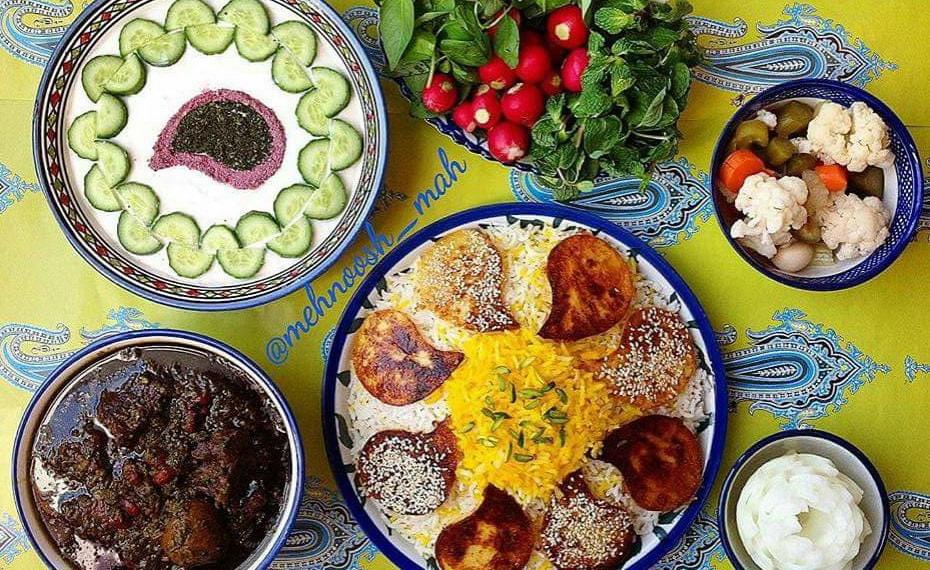
Persian cuisine, also known as Iranian cuisine, has its own unique characteristics that set it apart from other Middle Eastern cuisines. While there are some overlapping ingredients and dishes due to historical and geographical connections, there are notable differences in flavors and cooking techniques:
- Use of herbs and greens: Persian cuisine uses a variety of fresh herbs and greens in abundance, such as parsley, cilantro, dill, mint, and fenugreek. These herbs are used in dishes like Ghormeh Sabzi, Kuku Sabzi, and Sabzi Polo, giving Persian food its distinct and refreshing taste.
- Fruit and nuts: Persian dishes often incorporate fruits like pomegranates, barberries, prunes, apricots, and cherries, adding sweet and tangy flavors. Nuts like pistachios, almonds, and walnuts are also common, providing texture and richness.
- Balanced flavors: Persian cuisine is known for its balance of sweet, sour, and savory flavors, achieved by combining ingredients like saffron, cinnamon, cardamom, and rosewater with tangy elements like pomegranate molasses, sumac, and lime juice. This differs from some other Middle Eastern cuisines that may focus more on spices and heat.
- Rice-based dishes: Rice is a staple in Persian cuisine, used in various dishes like Chelow, Polo, and Tahdig. While rice is also present in other Middle Eastern cuisines, Persian rice dishes often feature unique flavor combinations and elaborate preparation techniques.
- Slow cooking and stewing: Persian cuisine heavily emphasizes slow-cooked stews called Khoresht, like Fesenjan, Gheimeh, and Ghormeh Sabzi. These stews are typically served with rice and showcase a wide range of flavors, from sweet and sour to savory and tangy.
- Kebabs: While kebabs are common throughout the Middle East, Persian kebabs have their own unique flavors and techniques. Popular Persian kebabs include Jujeh (chicken), Koobideh (ground meat), and Barg (beef or lamb), often marinated with saffron, yogurt, and various spices before being grilled.
- Bread: Persian cuisine features different types of bread, like Lavash, Barbari, and Sangak, which are typically flatter and thinner compared to the puffy bread common in other Middle Eastern cuisines.
- Dairy: Persian cuisine makes use of dairy products like yogurt, cheese, and whey (kashk) in various dishes, including Mast-o-Khiar (yogurt with cucumbers) and Kashk-e Bademjan (eggplant dip with whey). While dairy is also present in other Middle Eastern cuisines, its application in Persian dishes is often distinct.
These differences in flavors and techniques contribute to the uniqueness of Persian cuisine, setting it apart from other Middle Eastern culinary traditions.